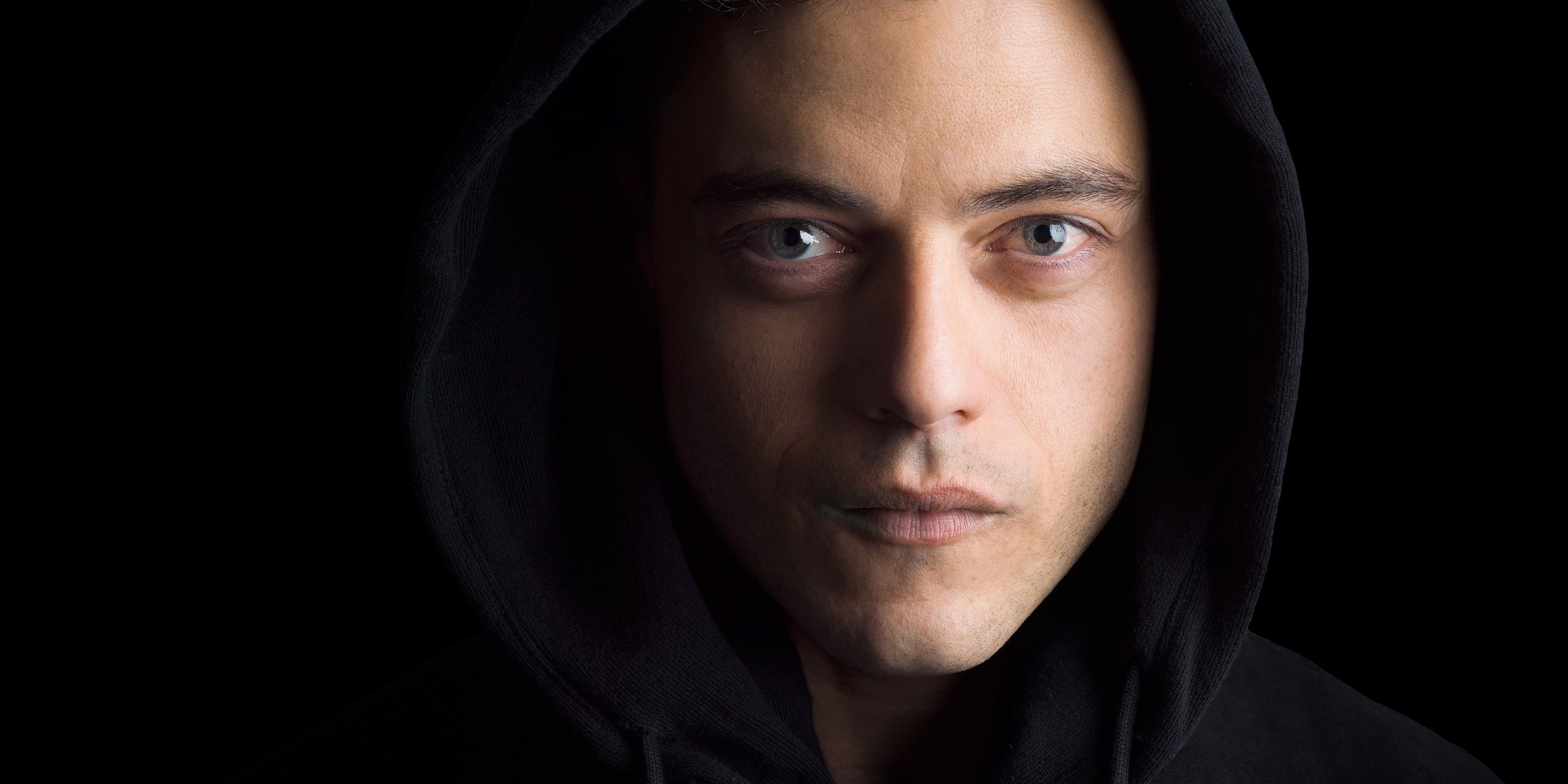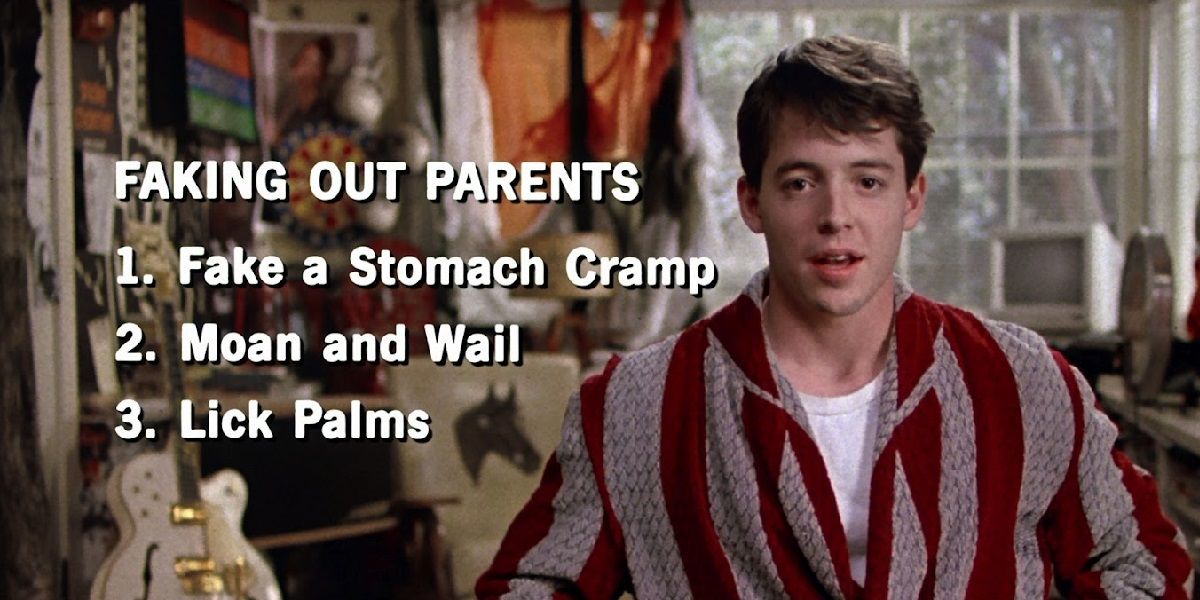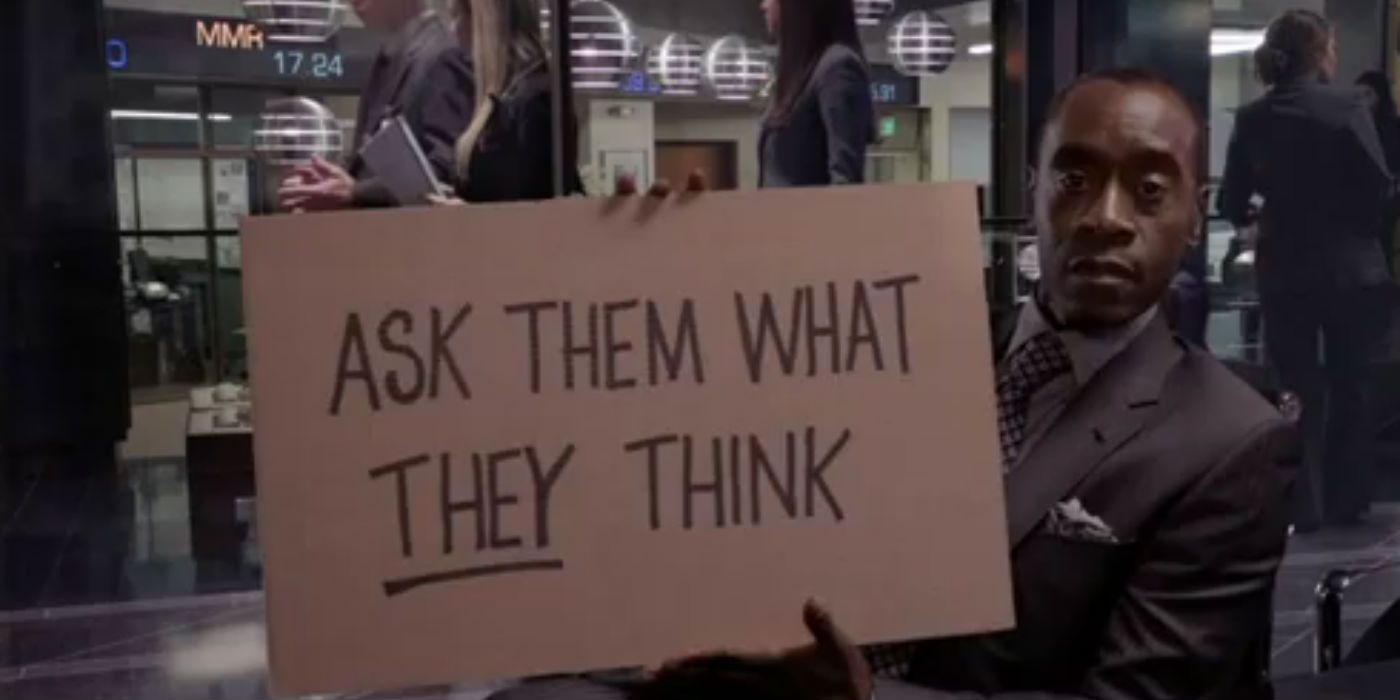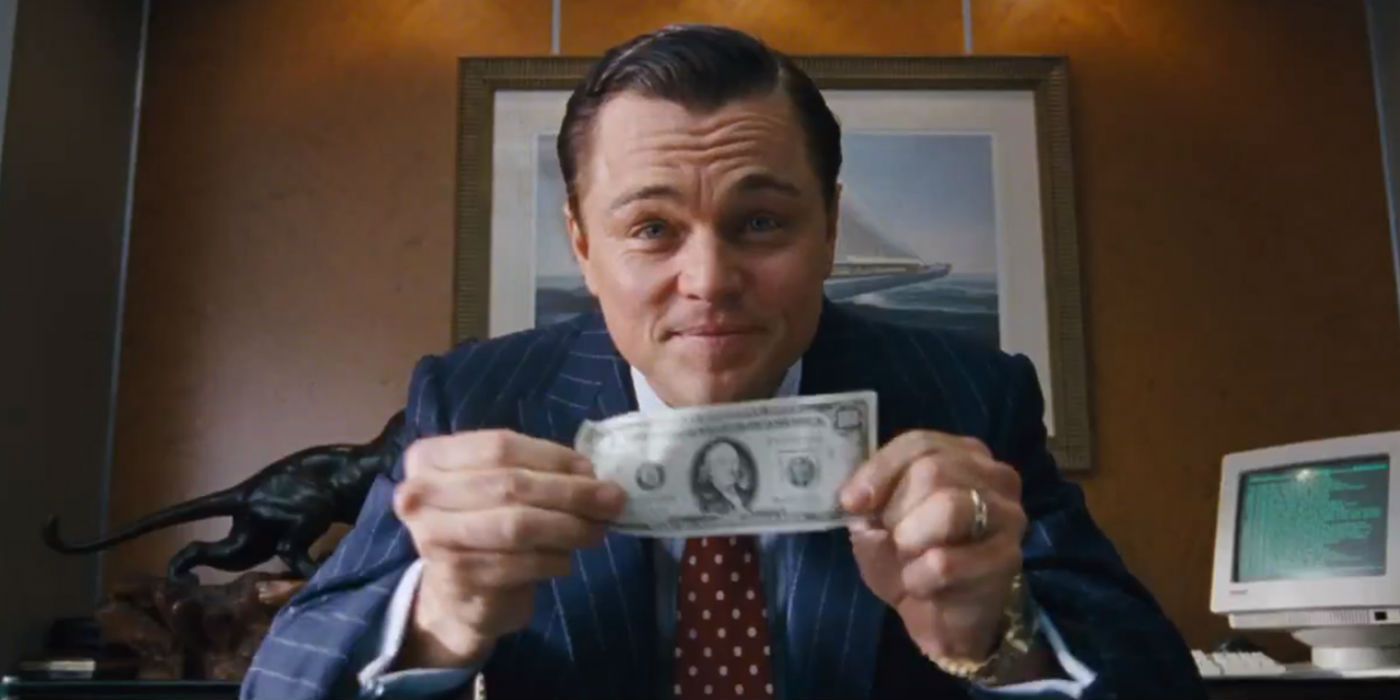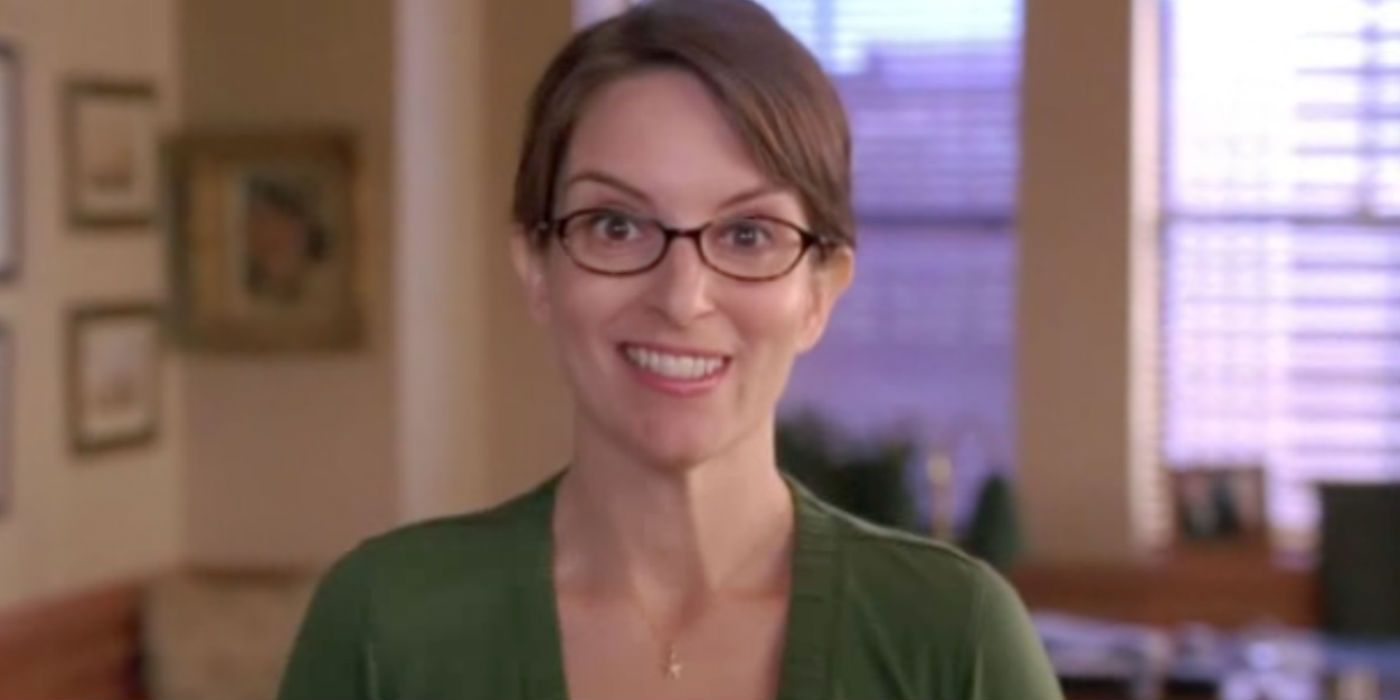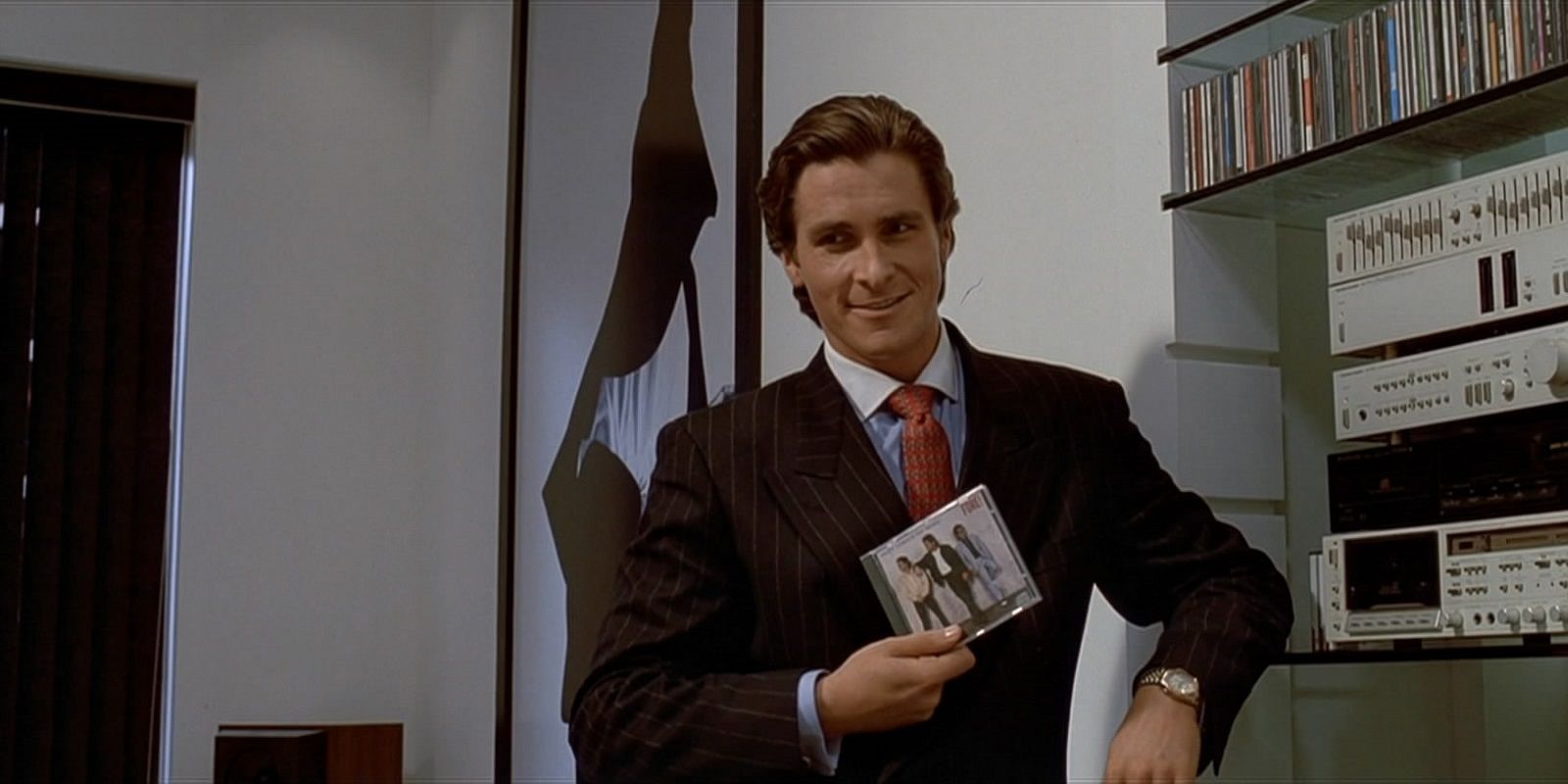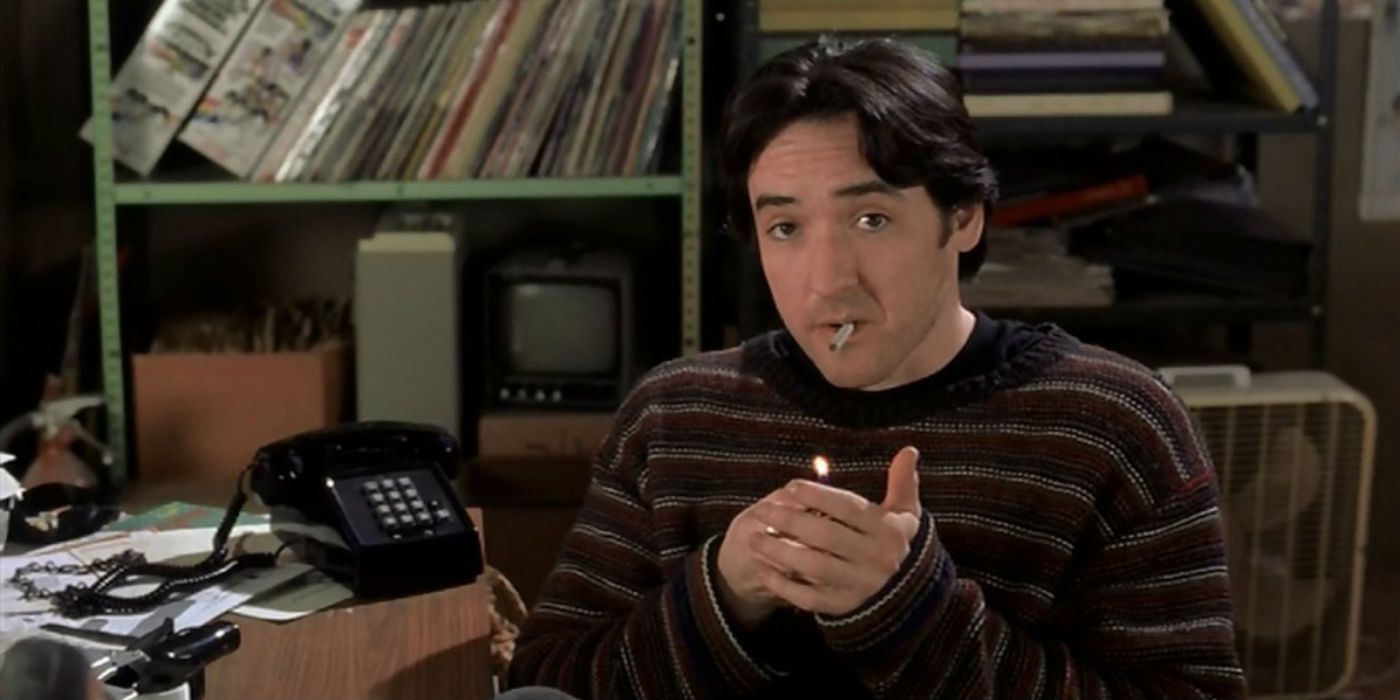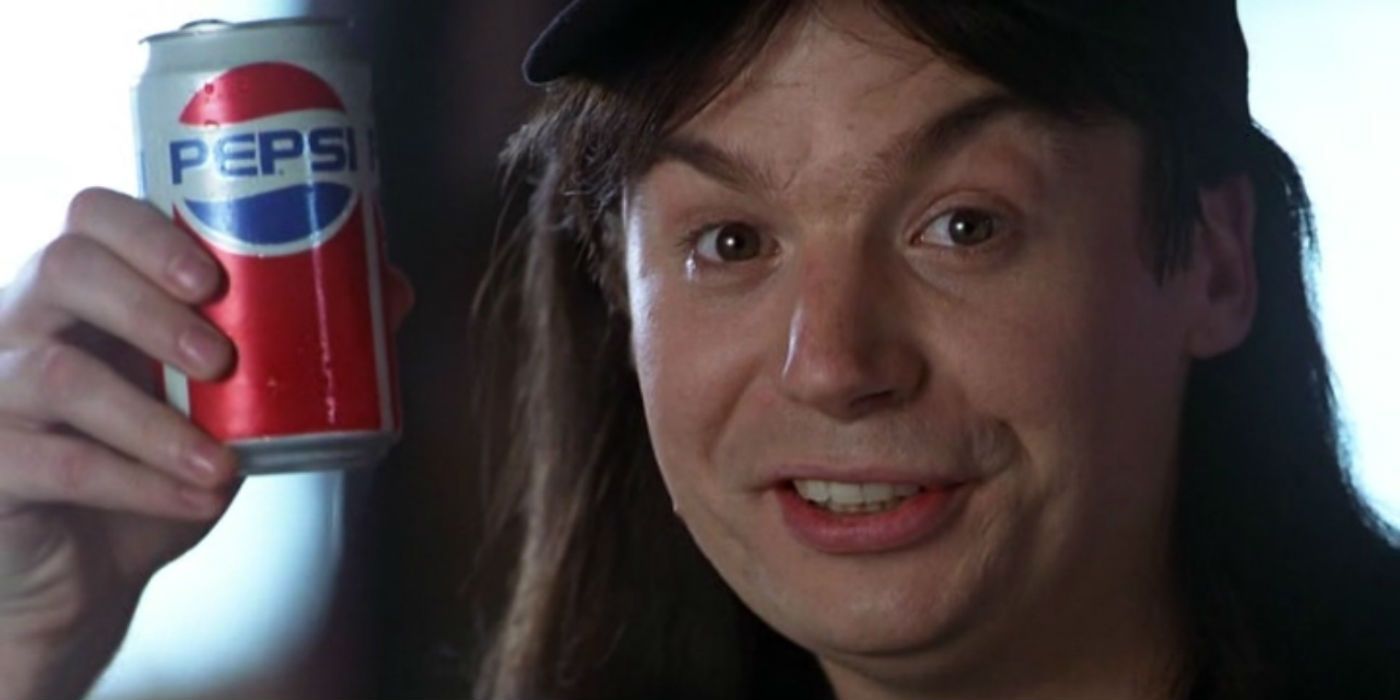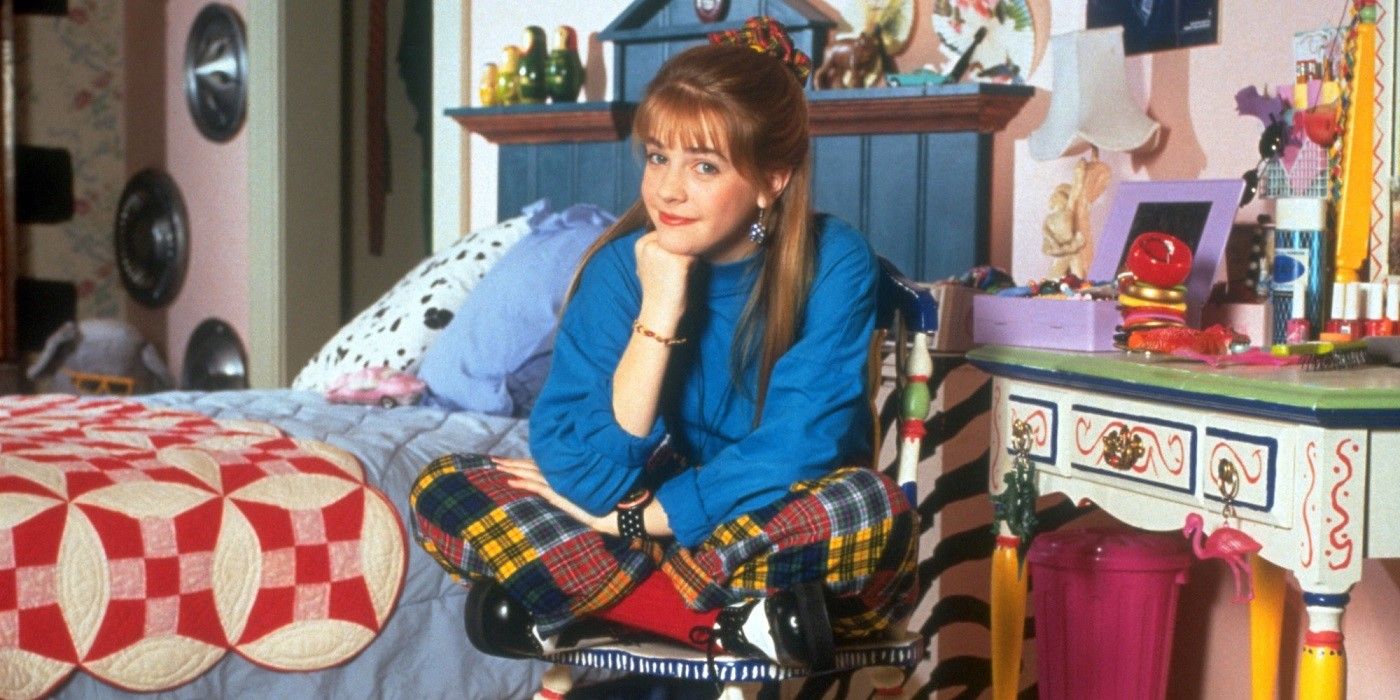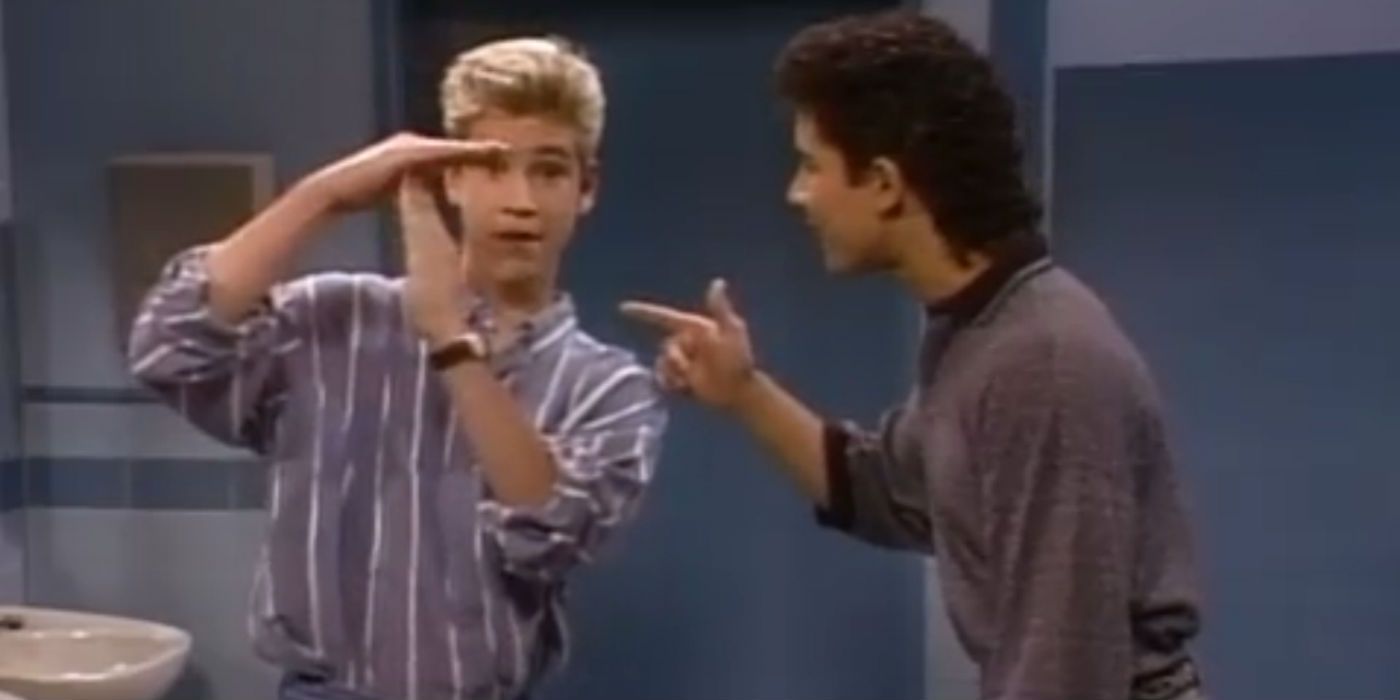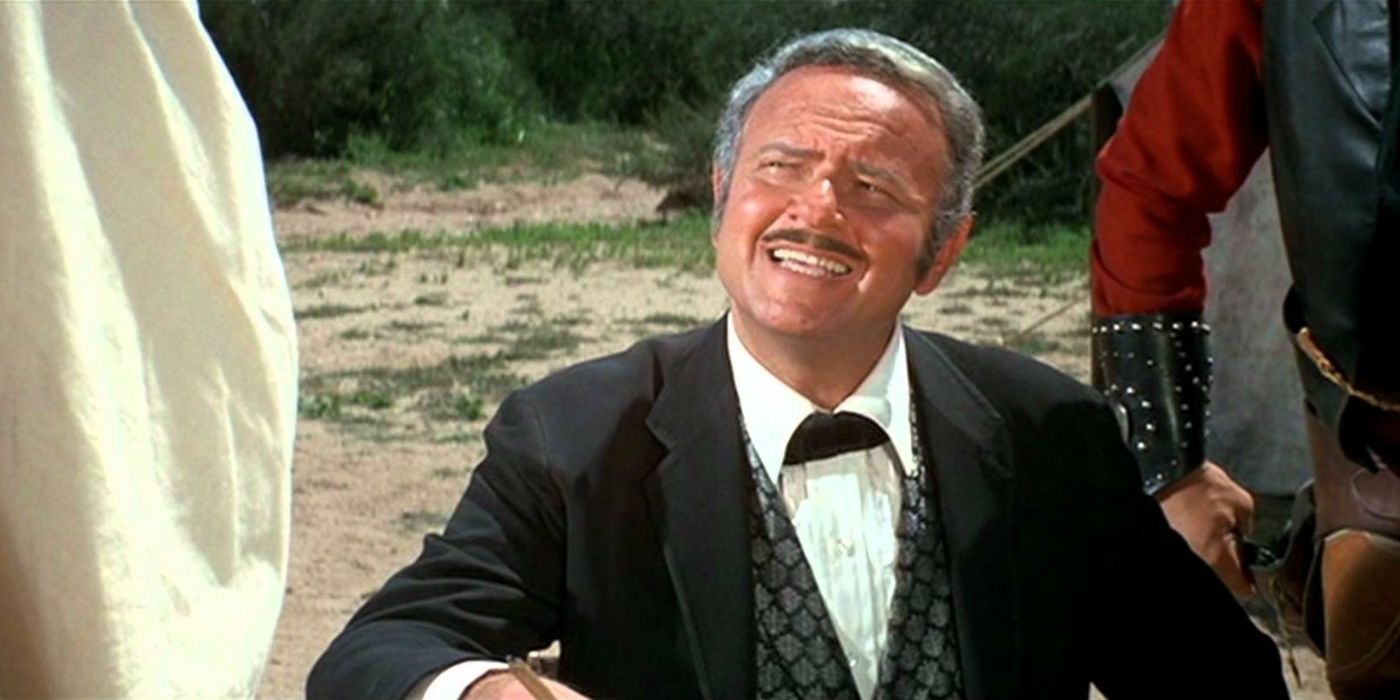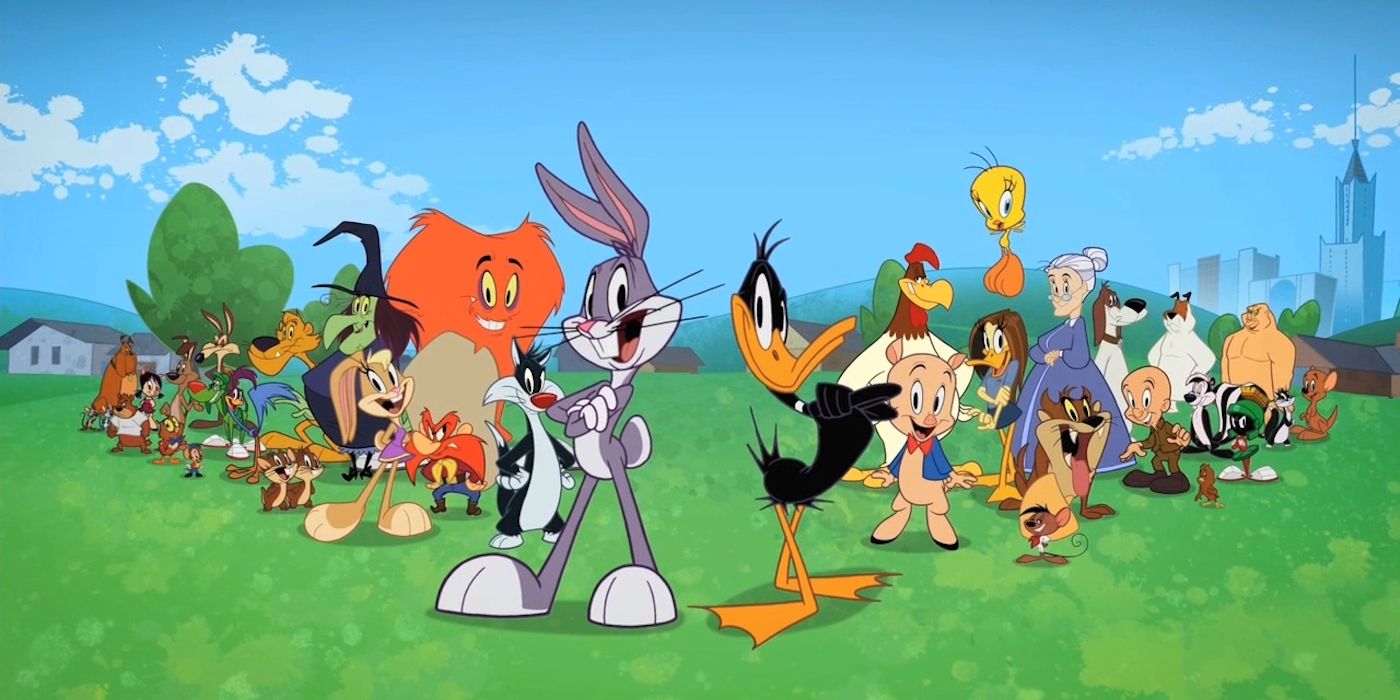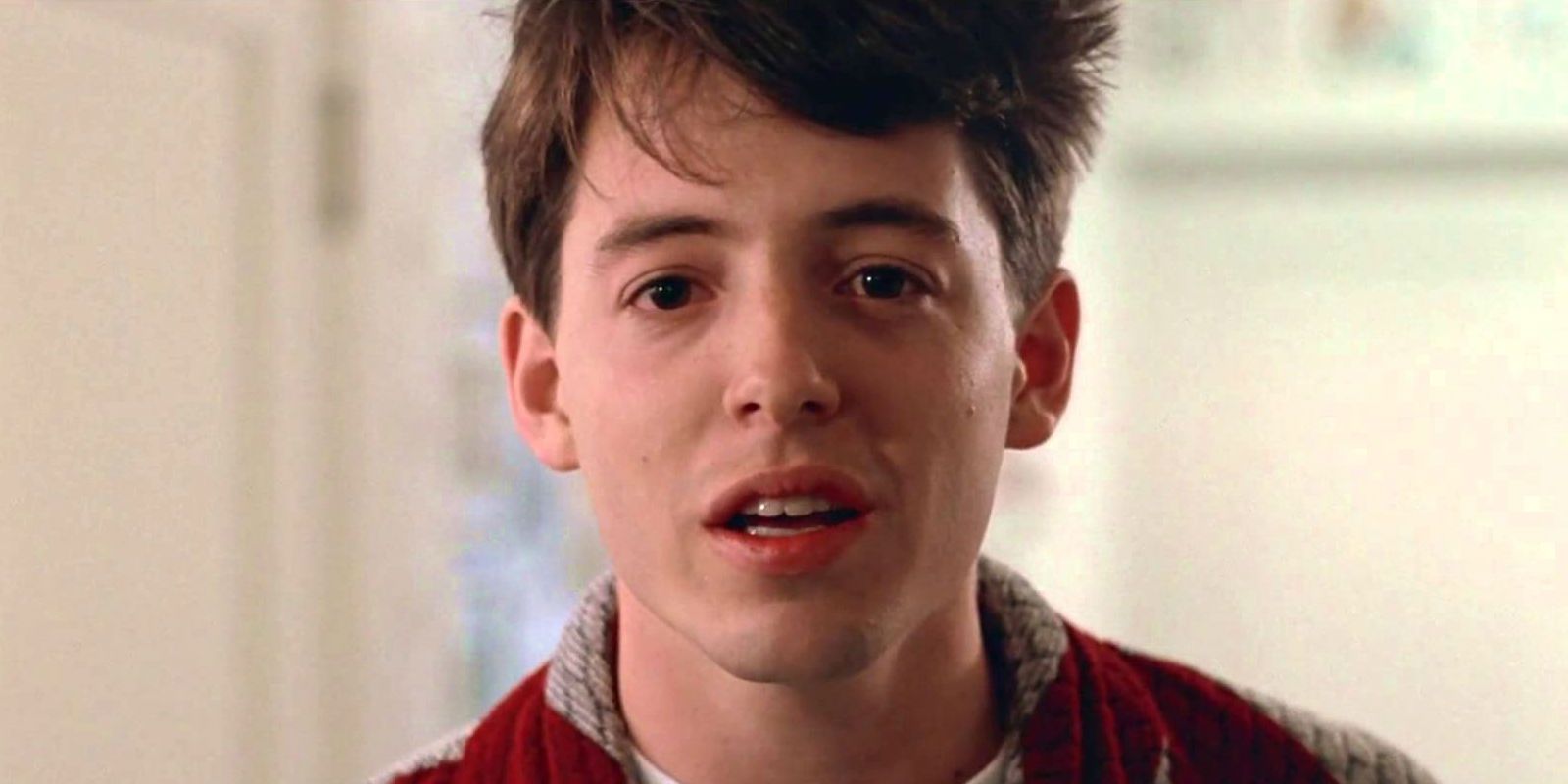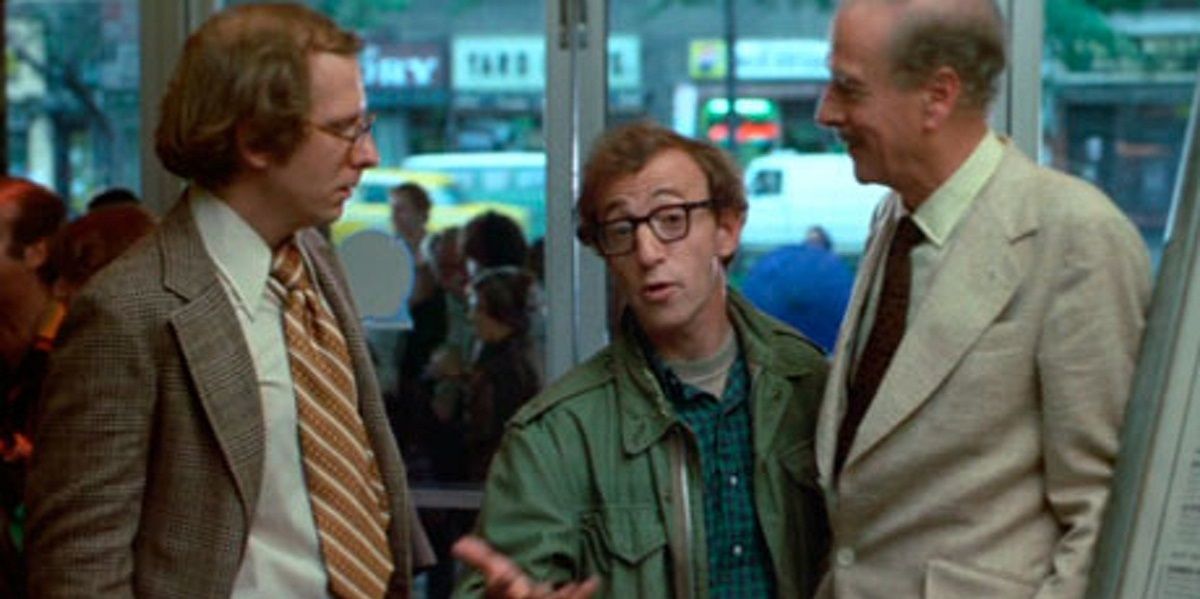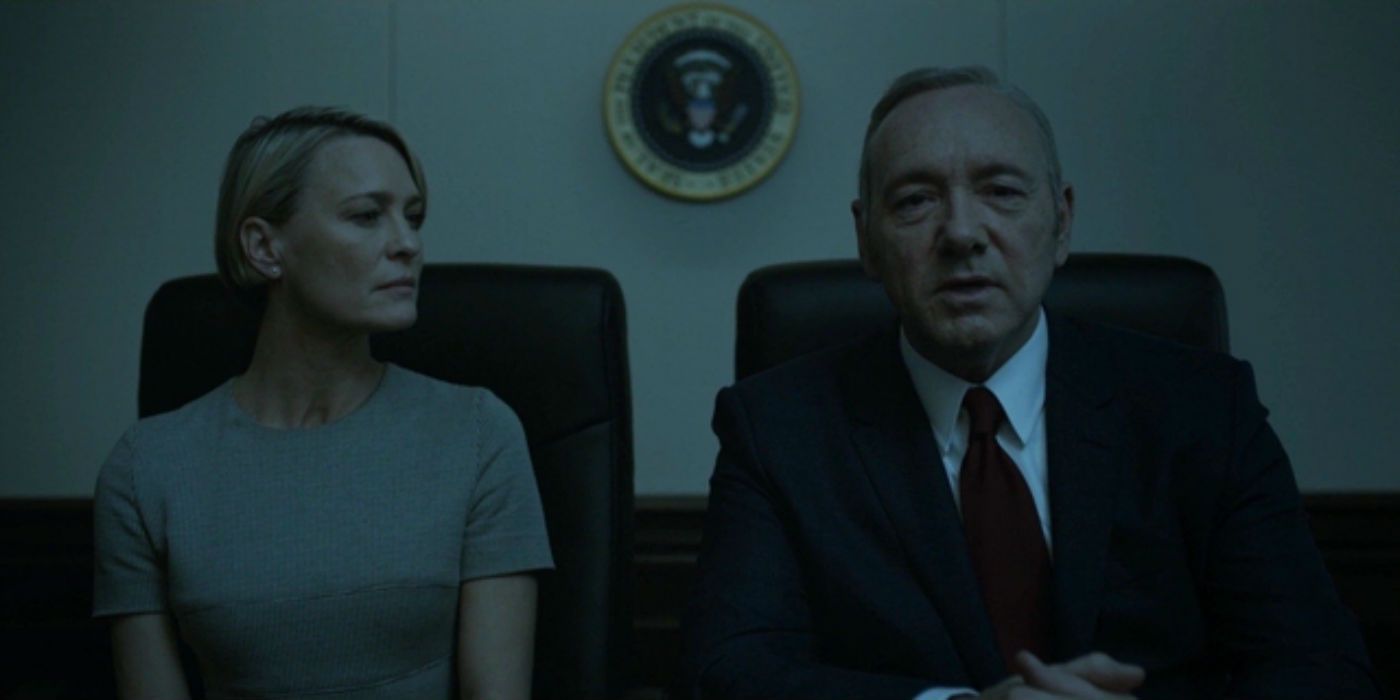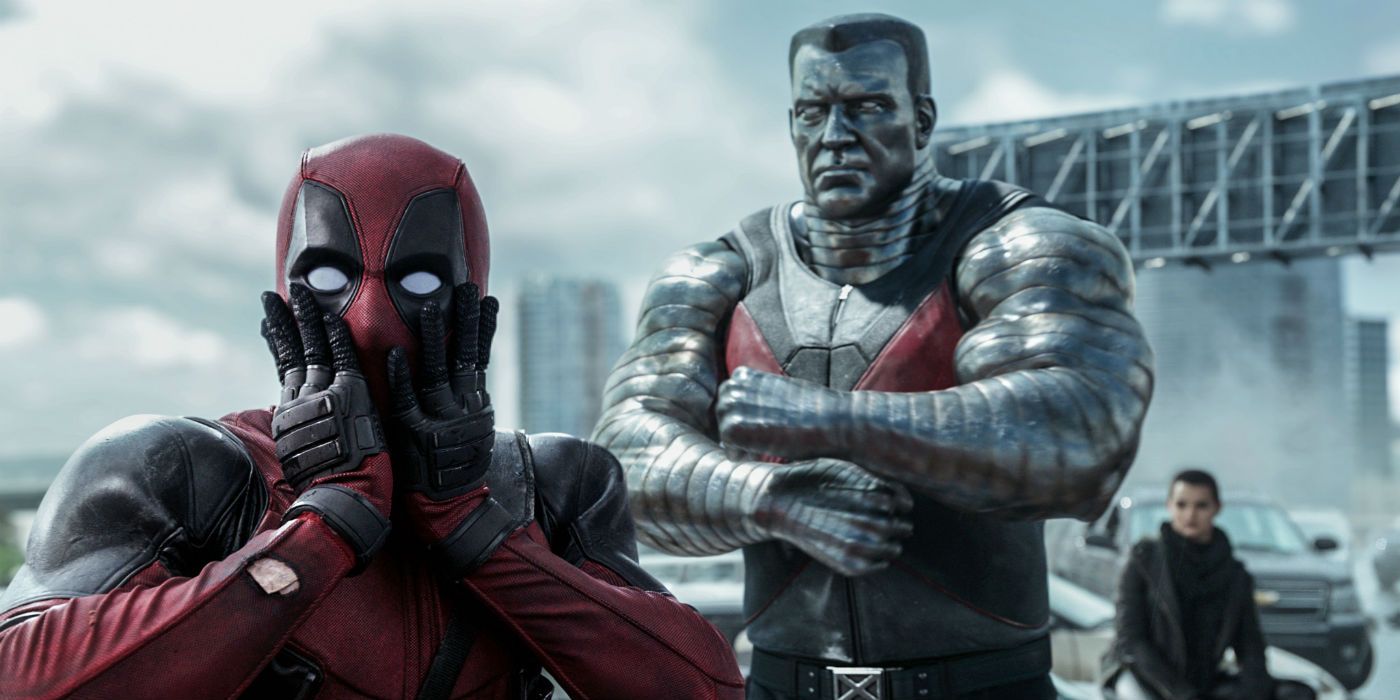Put simply, breaking the fourth wall is when a character breaks free of the world established by the story and talks directly to the audience. Dating back to Shakespeare, it adds an entirely new level of meta-awareness that has become common place in current film and television. Some see this as a cheat when it comes to storytelling, but when done well, it can give us quite a bit of insight into the inner workings of an otherwise complex character.
There are different reasons for breaking the fourth wall. Sometimes a character needs to explain something to audience more clearly, while other times a creator wants to give the audience better insight to a character’s actions or motivation. Sometimes it is even a wink to the audience, acknowledging the absurdity of what is taking place. Regardless of the reason, it is the closest thing to the literary inner monologue that is sacrificed when translating something from the page. Excluding mockumentaries that are designed to do so, below are 15 of the strongest and most effective examples of breaking the fourth wall in recent television and film.
15. Marty Kaan - House of Lies
House of Lies was a small 30-minute dramedy on Showtime that, due to its small and loyal fan base, ran for a solid 5 seasons. It gave talented actors such as Kristen Bell and Ben Schwartz opportunities to try new things beyond the roles for which they were first known. Ultimately, the show rested on the shoulders of the extraordinary Don Cheadle, who led his team of consultants as Marty Kaan.
While the frequency with which he addressed the audience diminished as the seasons progressed, that only gave the instances when he did break the fourth wall a much greater impact. Not only did Marty address the audience; he also interacted with the environment. Marty would mess with other individuals in the scene or interact with the environment by, for example, kicking a soccer ball. This innovative way of using a well-trod device is what made the show unique.
14. Elliot Alderson - Mr. Robot
Mr. Robot took everyone by surprise when it blew onto the scene last year. Part of this was the insight it gave into mental illness as soon as the twist was revealed. We went along with Elliot as he got sucked into the world of corporate hacking, thinking the entire time that we were just along with him for the ride with the show's main character.
What we did not realize until the end of the season was that Elliot was looking to the viewer to verify his reality as he gradually realized he was losing his mind. We thought we were in it with him, but it turns out that Elliot has to go through it alone. This allowed us to immediately feel sympathetic for Elliot as he begged the audience to help him decipher what was real. He asked us to comfort him and it was devastating that we could not do so.
13. Jordan Belfort - Wolf of Wall Street
Leonard DiCaprio is charming enough to make us forget many flaws of his characters, and the individual he played in The Wolf of Wall Street had an abundance of them. Jordan Belfort used the technique of breaking the fourth wall to beat the audience, preempting any questions about the legality of his actions. This was as if to say, “Don’t worry about that, we have it covered,” essentially placating the audience with half-truths while we watch despicable actions take place.
Belfort demonstrates his skills by "selling" the audience the same way he "sells" people in the film. By making us like him, it almost feels as if he got away with something. This was so effective that The Big Short, a film that was a sharp critique of the American financial industry, responded to it two years later by using the device to clearly explain the concepts it was addressing and the problems with the decisions that its characters made.
12. Liz Lemon - 30 Rock
30 Rock has quirk in surplus. Meta jokes played a large part in the construction of the narrative, so it was only a matter of time before they started breaking the fourth wall. The amount that they did so increased over time as the show found its footing. Sometimes it was a look to the audience in the vein of Carol Burnett, and sometimes Liz Lemon directly asked potential sponsors for money. Tina Fey et all integrated their fourth wall breaking cleverly and in ways that made sense that almost made sense in-universe, like when Tracy Jordan went off his meds and essentially described the show within a show that is the premise of 30 Rock.
No matter the circumstances, Tina Fey excelled at weaving these references seamlessly into the rapid fire joke execution that made 30 Rock such a success. Network sitcoms are forced to do a lot of ridiculous things, and she did not want to let them get away with it without paying the price.
11. Patrick Bateman - American Psycho
Patrick Bateman, the title character in American Psycho, is a truly terrifying individual. Similar to Elliot Alderson, he addressed the audience at the end of the film for an entirely different reason than was initially framed at the beginning of the film. When the movie begins, it appears that he is telling the audience about his compulsion and proclivities. By the end of the film (and more clearly in the book), it shows us the truth behind his thoughts. Did everything really happen? What was real and what was fantasy?
Patrick Batemen quickly went from a man who had accepted the fact that he is a cold-blooded killer to a child begging for an explanation. This not only gave us insight to the mind of a truly sick individual, but also created a connection to the audience by showing the tricks that all of our minds can play on us.
10. Rob Gordon - High Fidelity
Breakups suck. Few people made us understand this better than Cusack’s Rob Gordon from High Fidelity. Without breaking the fourth wall, Gordon would seem like kind of a jerk. This use of the technique allowed us to see beneath his rough and bitter exterior into the soul of someone who was truly suffering and going through a personal crisis.
It is often hard to convey in films what is underneath the surface of a character. Rob’s true pain is not fully shown by his interactions with the other characters in the movie, because he, like many people, conceals his hurt. He can only be emotionally honest through his conversations with the audience. We all seem a bit crazy when going through breakups, but this look into the mind of a person retracing his romantic journey helped the audience realize that some experiences are universal. Plus he gives us a step-by-step tutorial on how to create the perfect mix tape.
9. Wayne Campbell - Wayne’s World
Wayne’s World change the entire lexicon of a generation and also presented the idea of breaking the fourth wall to an entirely new group of viewers. In the film, Wayne breaks the fourth wall to guide us through his world and his decision making process. He acknowledges the ridiculousness of product placement by committing an entire sequence to lampooning it, all the while looking directly at the camera. As the film ends, it gets extra meta, with Wayne offering alternate endings to please the viewers. There is even an overlooked post-credit scene where Wayne and Garth comment on the film’s credits.
Wayne had invited us into his basement on almost weekly basis on Saturday Night Live, but now he was inviting us into his entire world. Wayne’s World made breaking the fourth wall cool and was a great example of how it can be integrated seamlessly into a film without breaking the flow.
8. Clarissa Darling - Clarissa Explains It All
Clarissa Darling was a young lady who seemed like an adult to those in the right age bracket. When she spoke to the audience directly, sometimes in the form of her own show within a show, it made her seem more mature and like her problems mattered. This created a bond between the viewer and Clarissa, because what teenager didn't feel that way? Whether it is an annoying little brother or funny feelings about your best friend, problems often seem bigger than they are when we are at that age and Clarissa acknowledged that without diminishing it.
As a result of this, Clarissa seem like friends with the audience on a level unlike any teen show before. And this is only one small example of the innovative things the show did. Clarissa Explains It All danced between heartfelt and zany, which created the perfect environment for breaking the fourth wall.
7. Zack Morris - Saved by the Bell
Girls wanted him, boys wanted to be him. Zack Morris in Saved by the Bell defined what it was to be cool for a generation. Little did we know that the generation itself had a questionable definition of what it meant to be cool, but that is an entirely different issue. In addition to elaborating on his thoughts and schemes to the audience, Zack’s brand of fourth wall breaking was also firmly based in wish fulfillment. How many of us as teenagers wished that we had the ability to freeze time and consider everything that was going on around us so we could make the best decision?
While the normal teenage boy’s actions may not be quite as innocent with this taste of omnipotence, all it did was make us love the character more, even when he was being a borderline jerk. Zack Morris was part of a long running tradition of breaking down the fourth wall to show the audience that there was more to this mischievous scamp that meets the eye.
6. Hedley Lamarr - Blazing Saddles
Blazing Saddles was a defining film for Mel Brooks for many reasons. Breaking the fourth wall is taken quite literally and had more of a structural impact on the film in this specific instance. In the final act of the movie, the characters we have been following actually crash through a physical wall into a neighboring Hollywood film. In fact, the actors say point blank that they are “…working for Mel Brooks,” before a huge fight breaks out with the musical production. The villain of the piece, Hedley Lemarr, then tears through New York and even goes to see a screening of Blazzing Saddles, cracking jokes the whole way. Brooks is commenting on the cinematic conceit of fourth wall breaking, thus taking it to an entirely new level.
It is because of cinematic risks like this that Brooks became an icon as opposed to simply a talented comedy director. He went on to experiment by referencing himself and other films of his as his career progressed, breaking down the fourth wall on a larger, ongoing scale. It is no surprise that he is one of the definitive comedy voices of our time.
5. The Looney Tunes
Whether it was Elmer Fudd telling his he was hunting “wabbits” or Bugs Bunny informing us that he was a stinker, Looney Tunes cartoons are perhaps the first experience many children had with the idea of breaking the fourth wall. Given how old many of these cartoons are, it is perhaps the first time anyone attempted to do so after William Shakespeare.
Audiences could follow along happily with the story and then, all of a sudden, be addressed directly by the characters. It made children feel like they were in on the joke, as opposed to just being casual observers. The characters did not just have to function in this wacky world, they were fully aware of it. Wile E. Coyote would ask for our help and sympathy as Daffy Duck would vent his frustration. This allowed for a moment of sympathy before they fell off that cliff, which took the enjoyment to an entirely new level.
4. Ferris Bueller - Ferris Bueller’s Day Off
Ferris Bueller made talking to the audience cool in a way that no one else had. You were not just watching the caper unfold, you were Ferris's other best friend, along for the ride. Other than his two friends, the audience was the only one that got to see the real Ferris. It allowed us to see his innocence juxtaposed with his cool guy image.
It also let us know that he truly cared about his friends, even though he may demonstrate it through criticism and peer pressure. Perhaps the greatest use of breaking the fourth wall to date, Ferris rewarded the audience who stayed through the credits by telling them to go home. This not only endeared him to those watching the film, but also left moviegoers with the comforting thought that his world continued after the audience left the theater. Isn’t this something we all like to think about movies?
3. Alvy Singer - Annie Hall
Annie Hall is perhaps the gold standard and most pointed example of characters effectively breaking the fourth wall. It became a defining characteristic of Woody Allen’s films for a long time. Instead of trying to have the audience interpret complicated emotions, speaking directly to the audience gave us true insight into Alvy’s anxiety and made him seem that much more vulnerable. The entry point for the audience was clear.
Allen makes the smart move of breaking the fourth wall immediately so that the audience knows what they are in for. The rest of the world was seamlessly blended into these discussions with the viewer, thus blurring the line between our reality and his. Furthermore, there are always small details that impact relationships which are not always evident when watching them take place, and Allen made these abundantly clear. Sometimes clarity of a message is more important than artistic expression, yet Allen managed to flip this on its head and combine the two.
2. Frank Underwood - House of Cards
It is no secret that Frank Underwood from House of Cards is one of the most conniving and underhanded protagonists present in modern television. Sure, we know he is a sticky politician and a generally bad person, but we only get real insight into his cruelty and the true nature of his evil when he addresses the audience directly. Take the opening scene of the series, when he kills a wounded dog, for example; one might think that he is simply putting it out of his misery rather than furthering his own agenda if he did not clarify this for us.
Frank Underwood is a cheater, murderer, and double crosser, but he also enjoys it. Not to mention that it is all permitted by his wife, Claire, who agrees that the means justify the ends. The reality of their relationship and goals may be surmised by his actions, but is solidified by his breaking of the fourth wall-- never more so than in the season four finale, when we see that Claire is aware that Frank is breaking the fourth wall.
1. Deadpool - Deadpool
How could this not be number one on our list? Not only does Deadpool make a habit out of breaking the fourth wall, but his awareness of the audience is a defining characteristic of his persona and a large part of why people think the character is so popular. Everyone wondered the filmmakers would handle Deadpool's fourth wall demolition when the movie was announced, and Reynolds and team did not disappoint. Not only did the break the fourth wall multiple times, but they drew attention to the meta nature of doing so by breaking the fourth wall within another fourth wall break, and commenting on it. Who could forget that Ferris Bueller-themed post-credits scene?
Those who paid closed attention will even notice that Wade Wilson never addresses the audience until he goes through his transformation into Deadpool. It was details like this that not only made the film a success for fans, but also the highest grossing R-rated comedy of all time.

